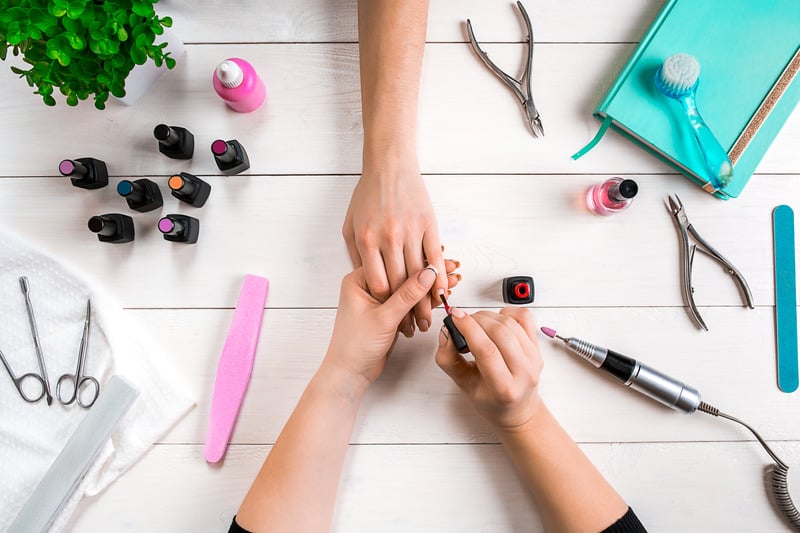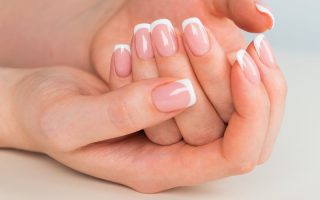Nail care is an important aspect of personal grooming, yet it is often surrounded by myths and misconceptions. These myths can lead to poor nail care practices and even damage. Let’s debunk some common nail care myths and set the record straight, so you can take better care of your nails.
Myth 1: Nail Polish Weakens Nails
Many people believe that nail polish weakens nails, but this is not true. In fact, nail polish can help protect nails from chipping and breaking. Dr. Dana Stern, a dermatologist at The Dermatology Group in New York City, explains that nail polish acts as a barrier against moisture loss and physical damage (Well+Good). A study published in the Journal of Cosmetic Dermatology (2022) found that regular use of nail polish does not damage nails and can even protect them.
Personal Insight
From my own experience, wearing nail polish regularly helped my nails stay strong and less prone to breaking. I noticed that my nails chipped less when I had a protective layer of polish on them.
Myth 2: You Should Never Trim Your Cuticles
There is a common misconception that you should never trim your cuticles. While it is true that over-trimming can damage the cuticle and lead to infections, trimming them properly can help remove dead skin and prevent hangnails. Jolene Hart, founder of the nail salon chain J. Hart Beauty, recommends gentle trimming to maintain nail health (Harper’s Bazaar).
Best Practices for Cuticle Care
- Soak Your Nails: Before trimming, soak your nails in warm water to soften the cuticles.
- Use a Cuticle Remover: Apply a cuticle remover to help dissolve dead skin.
- Trim Sparingly: Use a cuticle nipper to gently trim only the excess skin. Avoid cutting too close to the nail bed.
Myth 3: Nail Biting is a Harmless Habit
Nail biting is often seen as a harmless habit, but it can lead to several problems. Dr. Michael Apa, a dentist and author of “The Ultimate Guide to Nail Biting,” notes that nail biting can cause tooth damage, gum disease, and infections (ABC News). A review published in the Journal of the American Academy of Dermatology (2021) highlighted that nail biting can introduce bacteria and fungi to the nail bed, leading to infections.
Breaking the Habit
- Keep Nails Trimmed: Keeping your nails short can reduce the urge to bite.
- Use a Bitter Nail Polish: Applying a bitter-tasting polish can deter nail biting.
- Find Alternatives: Engage in stress-relieving activities like squeezing a stress ball.
Personal Insight
A friend of mine struggled with nail biting for years. She found success by keeping her nails painted with a bitter-tasting polish and carrying a stress ball to use whenever she felt the urge to bite.
Myth 4: Nail Polish Remover is Harmful to Nails
It’s a common misconception that all nail polish removers are harmful to nails. While some removers contain harsh chemicals that can dry out nails, many gentle removers are safe for everyday use. Natalie Hazard, a nail technician and founder of the nail care blog “The Nail Files,” recommends using acetone-free removers or those with moisturizing ingredients like aloe vera and vitamin E (The Zoe Report).
Choosing the Right Remover
- Acetone-Free Removers: These are less drying and better for frequent use.
- Moisturizing Removers: Look for removers with added moisturizers to keep nails healthy.
- Natural Options: Consider natural nail polish removers that use ingredients like soy.
Myth 5: Nails Need to “Breathe”
The idea that nails need to “breathe” by leaving them polish-free is a myth. Nails are made of keratin, a protein that does not need oxygen. According to dermatologists, leaving nails without polish does not benefit their health. However, giving your nails a break from polish occasionally can help prevent discoloration and dryness caused by frequent use of acetone-based removers.
Maintaining Nail Health
- Use Base Coat: Always use a base coat to protect your nails from staining.
- Moisturize Regularly: Keep your nails and cuticles hydrated to prevent dryness.
- Limit Harsh Chemicals: Avoid nail products with harsh chemicals that can weaken nails.
Myth 6: White Spots on Nails Mean Calcium Deficiency
White spots on nails are often mistaken for a sign of calcium deficiency, but they are usually the result of minor trauma to the nail matrix. These spots, known as leukonychia, can occur from minor injuries such as bumping your nail or improper nail care. In most cases, they are harmless and will grow out with the nail.
Preventing White Spots
- Be Gentle: Handle your nails gently to avoid trauma.
- Use Proper Tools: Use quality nail tools and avoid aggressive filing.
- Moisturize: Keeping nails hydrated can help prevent damage.
Myth 7: Gel Manicures Ruin Your Nails
Gel manicures have a reputation for damaging nails, but when done correctly, they can be safe. The key is to ensure proper application and removal. Avoid peeling off gel polish, as this can strip away layers of the nail. Instead, soak the nails in acetone to gently remove the gel.
Safe Gel Manicure Practices
- Proper Removal: Use acetone to soak off gel polish instead of peeling it.
- Hydrate Nails: Apply cuticle oil regularly to keep nails and cuticles moisturized.
- Limit Frequency: Give your nails a break between gel manicures to prevent damage.
Myth 8: Cutting Nails Short Prevents Infections
While keeping nails short can reduce the risk of infections, cutting them too short can cause problems. Nails that are cut too short can become ingrown and lead to pain and infection. It’s important to trim nails to a moderate length and file them smoothly to prevent rough edges.
Proper Nail Trimming
- Trim Straight Across: Cut nails straight across to prevent ingrown nails.
- Round the Edges: Gently round the edges with a nail file to prevent snagging.
- Avoid Over-Cutting: Leave a small white edge to protect the nail bed.
Conclusion
Understanding the truth behind common nail care myths can help you take better care of your nails. By following proper nail care practices, you can maintain healthy, strong, and beautiful nails. Remember, it’s important to be gentle with your nails, use the right products, and consult with professionals if you have any concerns. With the right knowledge and care, your nails can look their best every day.



